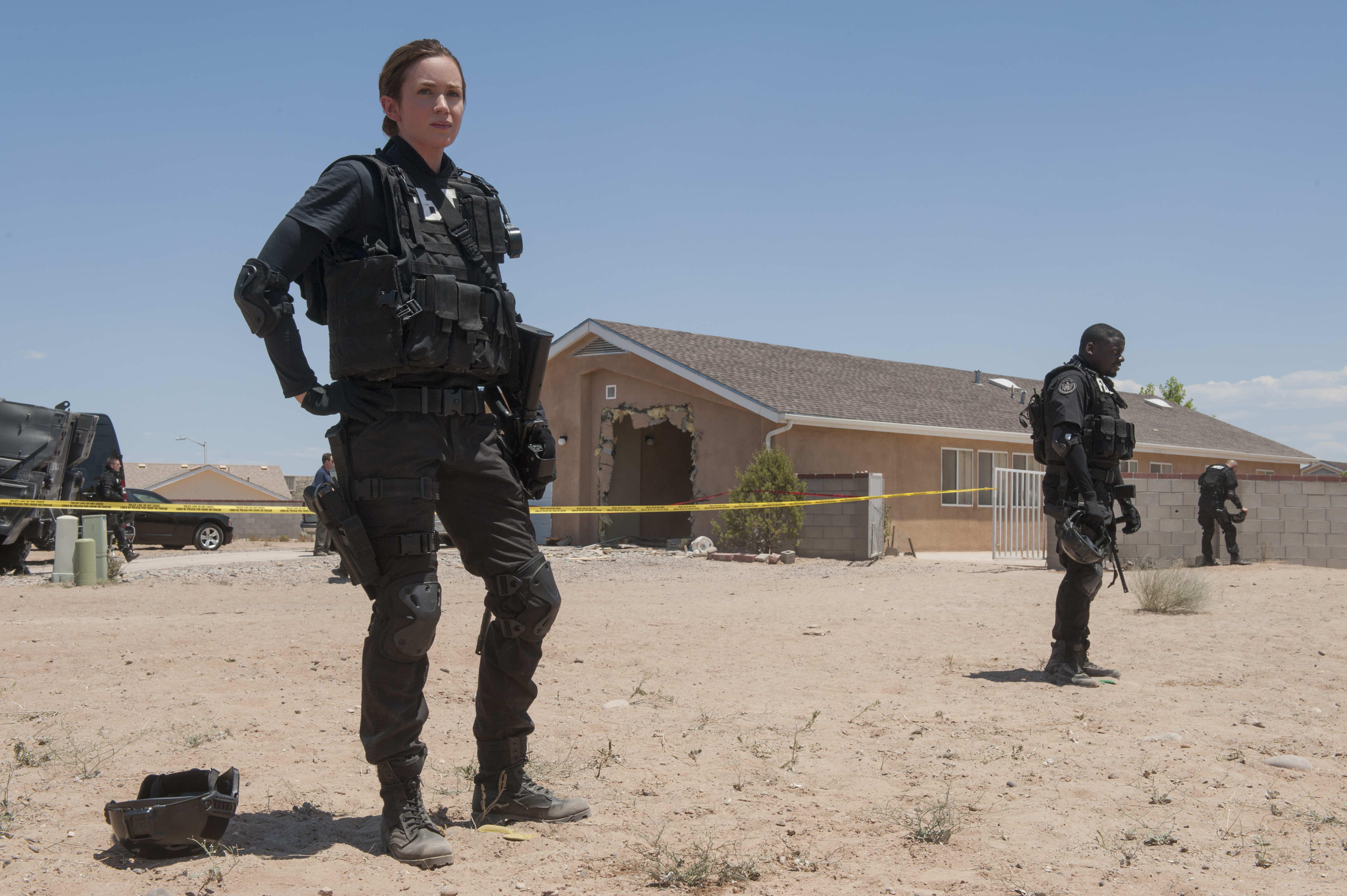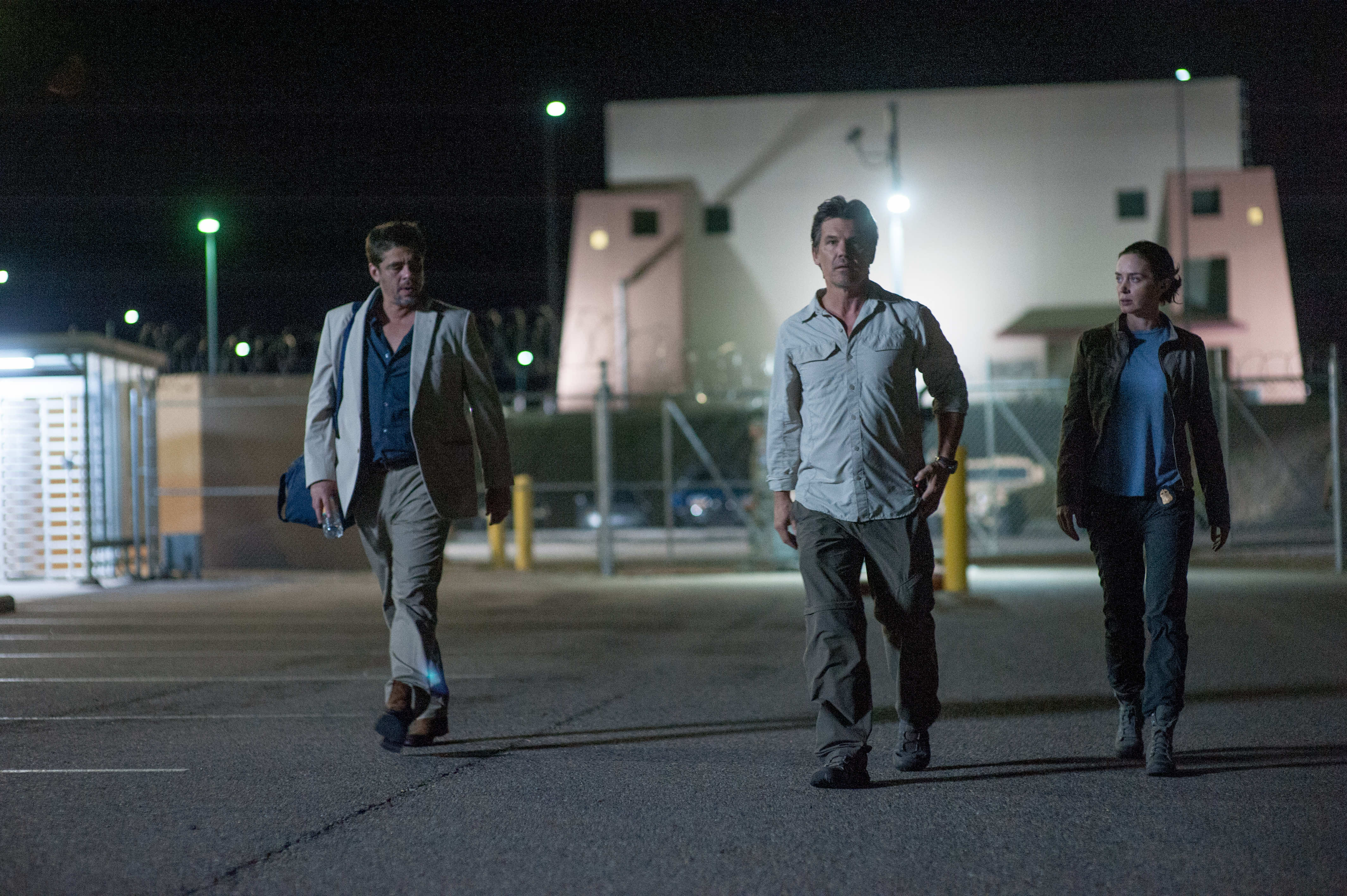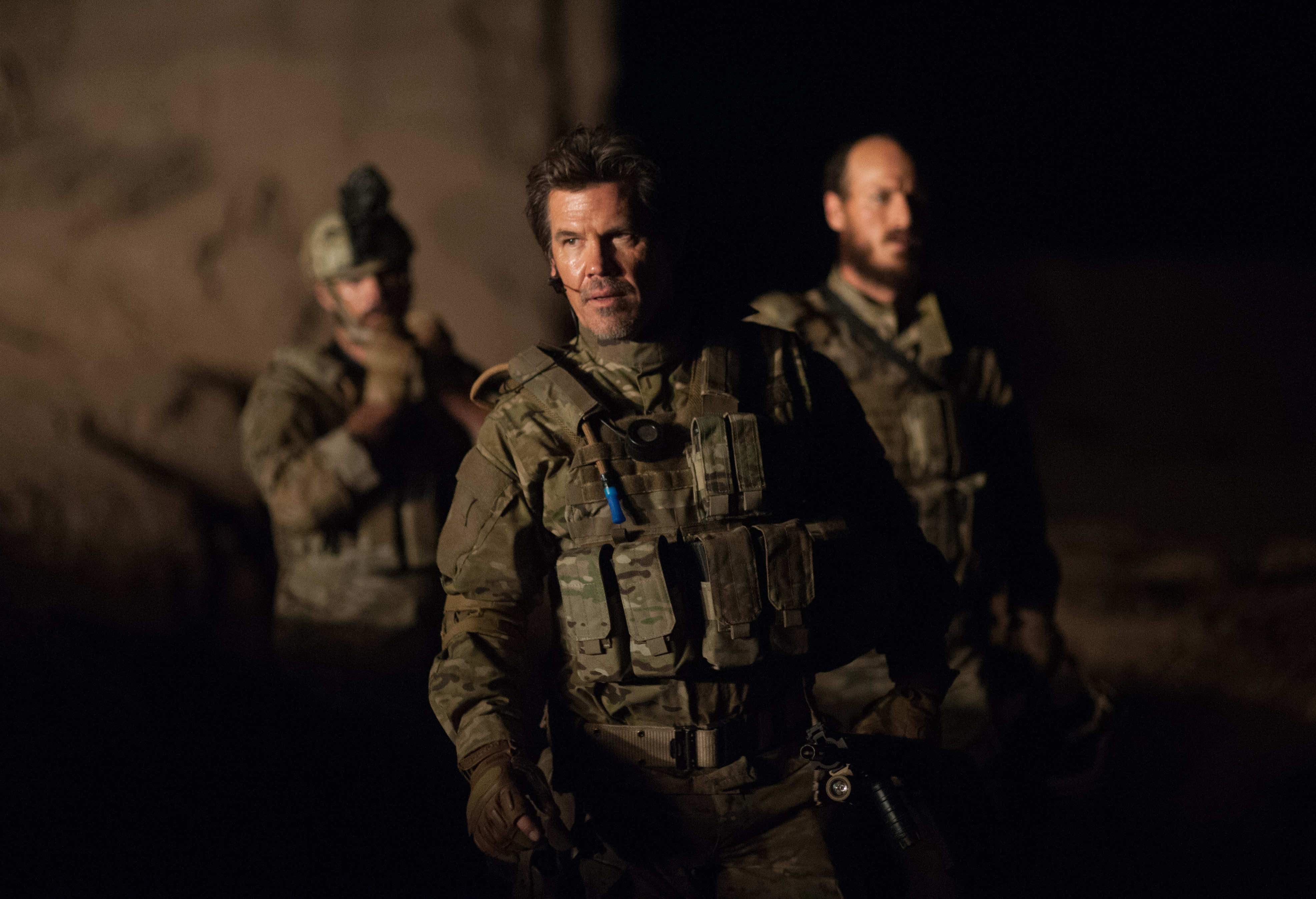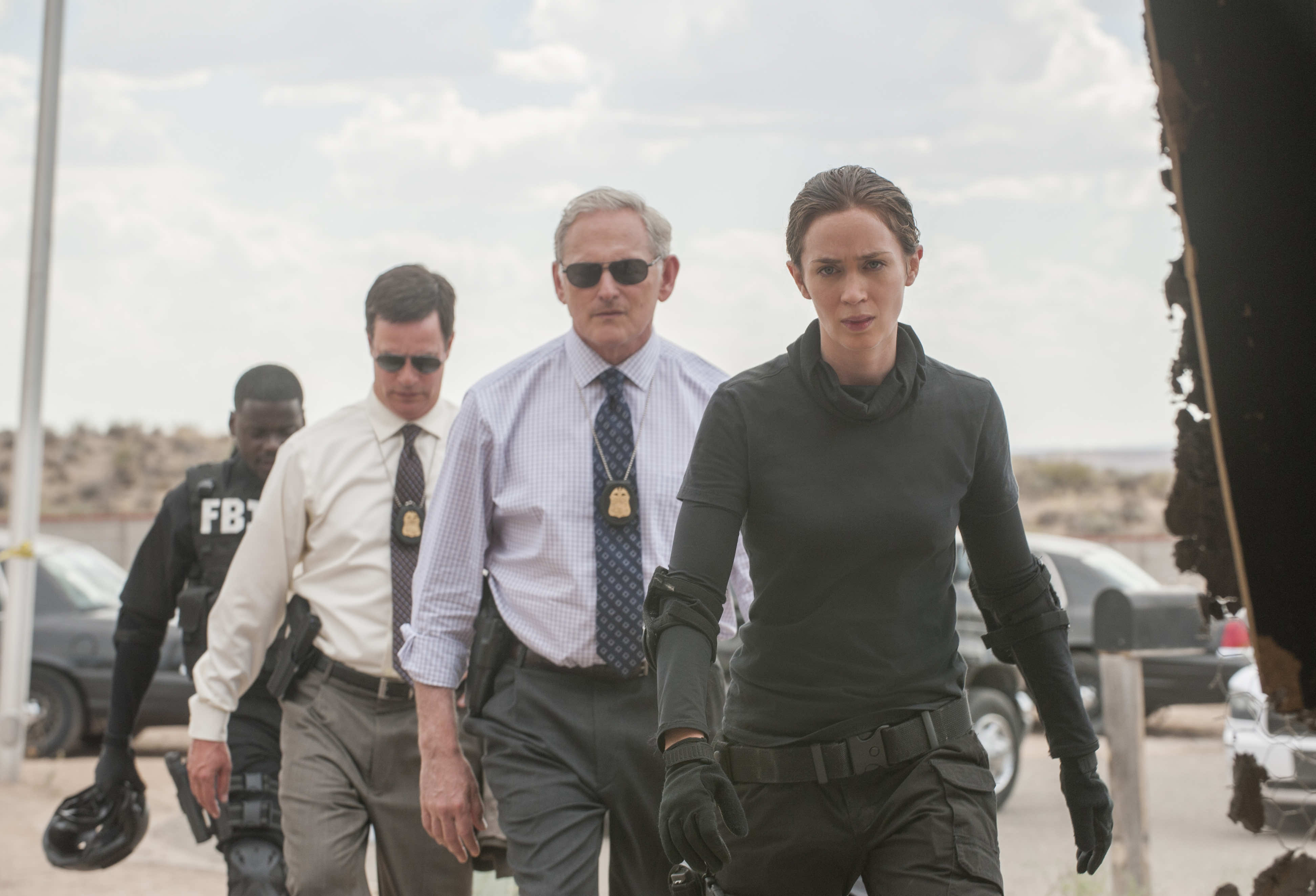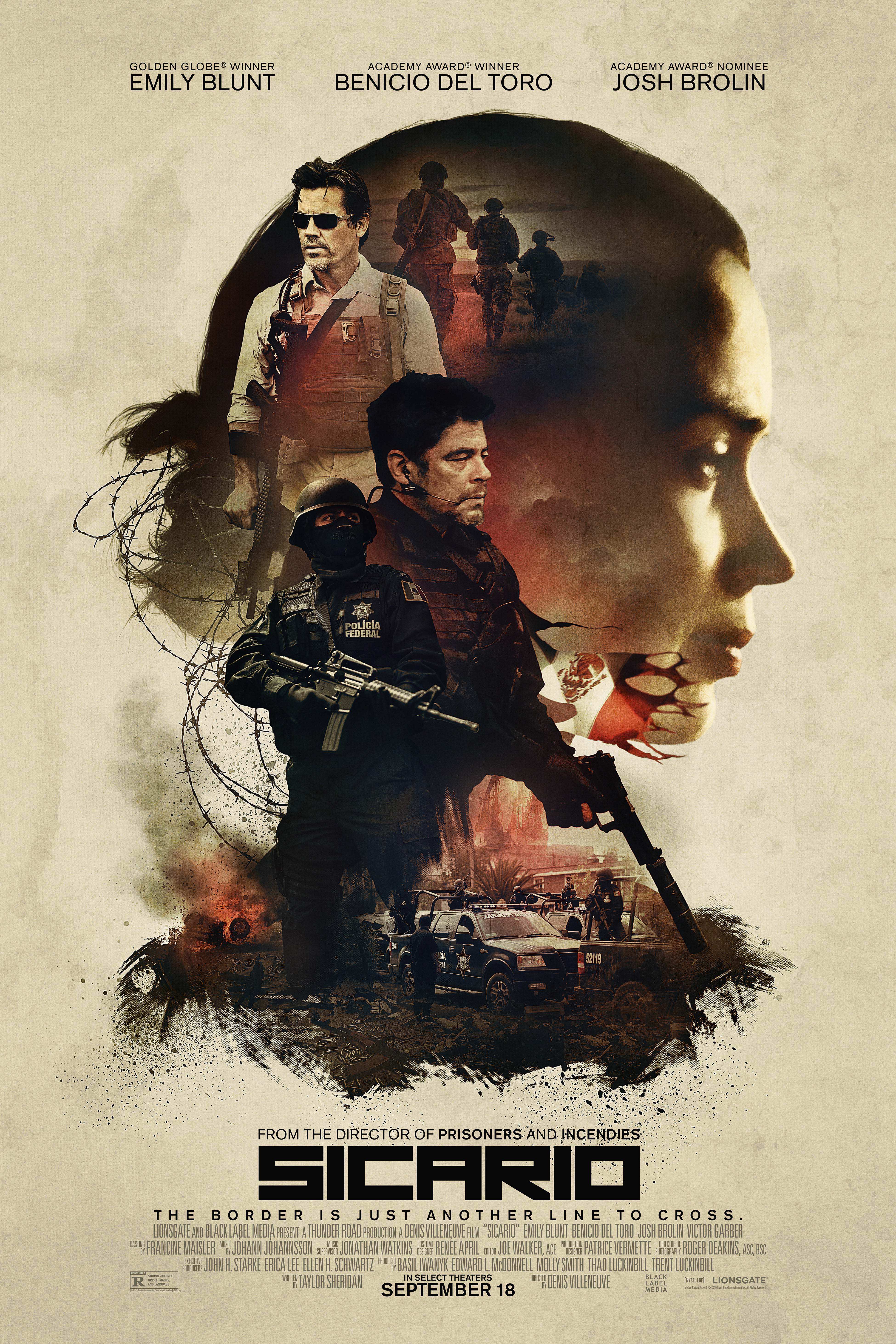 Note: we’ve waited a bit to share our review of this film to reference what some might consider spoilers.
Note: we’ve waited a bit to share our review of this film to reference what some might consider spoilers.
Too many of director Denis Villeneuve’s films have had issues with communicating ambiguous ideas that stumble over key moments of heavy-handed contrivance or missteps in plot development, ultimately undermining his storytelling with disappointing cognitive dissonance. In Incendies (2010) he leans on deus ex machina for a twist to find resolution for a family torn apart by war that ultimately rings less like profundity and more like coincidence. With Enemy (2013), he sapped the creepy power of José Saramago’s book The Double by tacking on a hollow joke ending. In his latest, Sicario, a film about the lawlessness of the border between Mexico and the U.S., Villeneuve deflates a nihilistic outlook with a poorly resolved subplot of revenge that ends up glorifying the notion of lawlessness and does little to offer any enlightenment to a very real war at the border between the U.S. and Mexico.
All these films are exceptionally shot, have interesting characters brought to life with strong performances, but they all suffer from fatal flaws in storytelling that weaken them to places of mediocre film-making as a whole. Sicario has received high ratings among mainstream critics (see its score on Metacritic). We won’t argue that this movie is not exquisitely shot with rich mise-en-scène that enhances the film’s eerie, unsettling mood and even slyly connects characters across the border. The cinematography by Roger Deakins is key for the film’s seductive look. It opens with an arresting sweeping shot of an Arizona suburb as a militarized FBI and police force converge on a house from the edges of the screen. From close-ups to wide shots, Sicario never feels uninteresting to look at. For added tension, Jóhann Jóhannsson provides an appropriately percussive soundtrack, geared to ramp up heart rates.
For all the effort behind the scenes to amp up the tension, Sicario‘s biggest strength lies in the film’s wide-eyed heart, actress Emily Blunt. She brings much sympathy to Kate Macer, a young but strong-willed FBI field operative with an idealistic, black and white mindset due for a reality check. After a startling discovery in that Arizona house punctuated by a booby trap that ends in the death of two officers, she is about to get her world upended. A cavalier big shot in flip-flops from D.C. (Josh Brolin) named Matt Graves recruits her for a cross-border operation that’s far from by-the-book. She’s off down the rabbit hole toward disillusioning enlightenment. Blunt does a lot with what is otherwise a one-dimensional character until she ends up a damsel in distress who can’t save herself in what is supposed to be some kind of profound revelation on a very complicated situation. Too many other characters feel archetypal and rote, including a family-man Juarez cop Silvio (Maximiliano Hernández) who is but a cog in a corrupt machine and Alejandro (Benicio Del Toro), a prosecutor from Colombia hired by the U.S. government as a very hands-on adviser.
The research by actor/writer Taylor Sheridan never goes deeper than the headlines: kidnappings that end in tragedy, dismembered bodies hung over an overpass, the police cooperating with the cartels to move drugs. Even the idea that the CIA is cooperating with Mexican police is old, albeit murky, news. It has been called Plan Mérida in Mexico. There’s an American-authored Wiki page about it calling it Mérida Initiative. By itself, the themes of the film fail to deliver a unique perspective and leave the theme broadly focused on shocking headlines presented as spectacle rather than exploring the deeper complexity of the issue of corruption and drug trafficking. It’s perfect stuff for Hollywood entertainment. No wonder a sequel was announced before the film opened in wide release, and of course it will focus on the film’s most romantic character: Alejandro, because Kate is proven ineffectual at film’s end.
Sicario has taken a page from the action thriller Zero Dark Thirty (Film review: ‘Zero Dark Thirty’ brings obsession with elusive truth to vivid light), and we’re not talking about mutual scenes shot with night vision goggles. Although Sicario focuses on the War on Drugs rather than the War on Terror, both make the case that there are intangible forces that complicate issues to a degree that present no viable solutions through the “legal” or “good” route. At the heart of moral dilemmas in these films there happens to be a female character questioning the logic and mechanics of the process. However, as opposed to Zero Dark Thirty, the approach in Sicario leaves this female character under-developed. Kate makes us care about procedure but only slightly, as she quickly seems to loose any power in the shadows of men like Graves and Alejandro, and when she does try to exert her power she only finds herself in trouble. Her character drives the point home about the dangers of the drug war, but she’s never in enough danger to genuinely unnerve the audience. In typical Hollywood fashion she survives the mission with her life. It leaves the audience with a level of comfort that diffuses the film’s attempt at presenting a deep moral dilemma. To see how to handle such a character the right way see William Friedkin’s To Live and Die in L.A., a film that probably wounldn’t pass today’s test audiences because it’s too disturbing to see a good guy killed half-way through the action. Sicario‘s filmmakers wouldn’t dare sacrifice the film’s thrills for a grim outlook that does genuine justice to the horrors of what happens to people who try to follow law and order in this drug war.
The movie reminds you of so many others before it and fails to capture a singular point of view to add a real sense of distinction. Films such as Miss Bala (2011) or Heli (‘Heli’ depicts human costs of drug-related violence with raw horror) were brilliant at focusing on particular characters and bringing to light the hidden dangers of the War on Drugs and their impact on everyday people. The complexity is there, and the end result does not mean filmmakers should completely throw their hands up when it comes to handling the multi-layered complexity of transnational illegal trade. Sicario becomes nothing more than a series of elaborate vignettes informed by headlines with a revenge tale tacked on to give the audience a sense of cathartic closure that makes it just a little bit easier to walk out of the theater.
Many defenders will not dare prepare you for the climax of Sicario, in fear of spoiling the movie. However, it is here where the film drops off the deep end with a slick if stupefying rogue mission by Alejandro, decked out in black fatigues and armed with a gun and silencer, to avenge his family. It turns the movie into just another Death Wish iteration in stylish packaging. Before he heads off on his personal vendetta to kill Fausto Alarcon (Julio Cedillo), the drug lord he holds responsible for the death of his loved ones, it is conveniently revealed that Alejandro’s wife had her head chopped off and his daughter was thrown into a vat of acid on the orders of this man. It’s meant to illicit sympathy for Alejandro, who is also revealed to have ties to the Medellín Cartel, so this act is also business. Not to mention, it also serves U.S. interests.
After a thrilling hunt out of a perfectly played level of a first-person shooter video game, which includes the rather indifferent killing of Silvio, Alejandro shoots is way to the dinner table of this drug lord. Holding Fausto, his wife and two young sons at gunpoint, Alejandro relishes his moment of meting his idea of justice. Before he dies, Fausto tells Alejandro — and in effect the audience — that he is no better a man for his actions because it was the Medellín Cartel who made Fausto, and the cycle will just continue (you know, to point out the obvious nihilism). Alejandro and then Fausto tells his kids to keep eating their dinner. They take little nibbles of the chicken at the ends of their forks, quaking with fear. Alejandro shoots the kids and wife. The kill shots happen off-screen, making the killings more palatable for the audience before Alejandro finally shoots a slack-jawed Fausto.
Thus ends Sicario‘s climax, a rather romantic depiction of bad-ass killing sanitized by its own restraint, sending a rather mixed signal to the audience of hypocritical righteousness with a little gloss of amorality courtesy of the film’s writer. Alejandro is presented as a victim who deserves some justice just shortly before his act, and then the film flinches in the neat deaths of the wife and children with cutaways from horror and a brief, restrained shot of aftermath (see A History of Violence for how to imbue acts of violence with the ugliness necessary to implicate the audience rather than satiate their catharsis). It’s all too slick, patronizing and rather tasteless.
It’s such a tonal shift that it deflates any semblance of the danger in chaos that Villeneuve and Sheridan worked so hard to establish earlier in the film. The film also flourishes during the early scenes where the characters are shrouded in mystery as far as their connections and motivations. Unfortunately, when it comes to their reveal, they are nothing but archetypes serving another Hollywood movie that glorifies violence as a means to an end. What’s worse, due to this penultimate scene, the driving force of the film is removed from the overall bigger theme of drug trafficking. It becomes personal and vicarious, a glossy stunt imposing cheap thrills on the audience. It creates a haze of resolution where there should be none. By the time Kate has a chance to do something about holding on to her ideals, it no longer matters. Sicario is not a statement film without a statement. It’s a film that compromises its statement for high-gloss tension that ultimately celebrates revenge in its cinematic choices and therefore stumbles in trying to be so much more than it can ever try to be.
—Hans Morgenstern with contibutions by Ana Morgenstern
Sicario runs 121 minutes, is in English and Spanish with English subtitles and is rated R (for somewhat gruesome violent and curse words). It opened in wide release last Friday. Lionsgate provided all images used in this review and invited us to a preview screening a week before its release for the purpose of this review.






